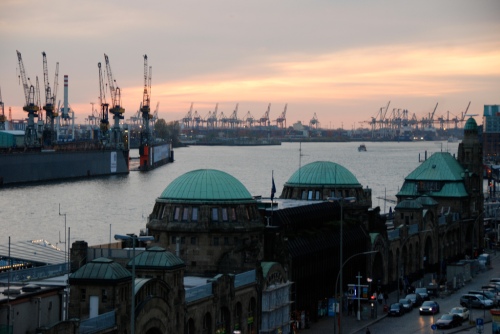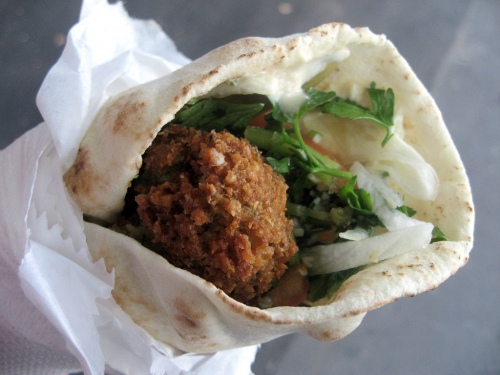 Locals are by far the best tour guides. They can usually tell you in an instant more about the history of the city, its stories on top of the cheapest places to grab a burger or a pint than any guide book, no matter how reputable. It takes living in a city to really know it and if you’re short on time (aka, if you’re not living there yourself) then you should get in touch with a local to show you around. When I’m travelling I try and get off of the tourist trail as much as possible and if I manage to find a local to take me around for an afternoon, well that is just an added bonus.
Locals are by far the best tour guides. They can usually tell you in an instant more about the history of the city, its stories on top of the cheapest places to grab a burger or a pint than any guide book, no matter how reputable. It takes living in a city to really know it and if you’re short on time (aka, if you’re not living there yourself) then you should get in touch with a local to show you around. When I’m travelling I try and get off of the tourist trail as much as possible and if I manage to find a local to take me around for an afternoon, well that is just an added bonus.
How to find a local?
Sometimes it just takes ordering a drink/coffee and sitting at the bar in the afternoon. Bartenders are friendly in most places and I’ve always been able to get a few pointers out of them after chatting for a little bit. I have the most luck with Couchsurfing.com, a great site that lets you find travellers and locals in cities around the world. This site is meant to connect people, if you need a place to sleep or if you just want to meet for a drink and it does a great job. You need a profile and it helps if you spend some time filling it out properly. Then you just make a search and start sending emails out. You should get a response quite quickly.
So, back to Hamburg.
I wanted to put together a few tips for visiting Hamburg. I’ve only been once but I really enjoyed it, especially because I had a local to show me and my travelling companion around. We spend our days just hanging out, the normal stuff a local would do. We ate vegan burritos in St. Pauli and walked around the harbour, taking photographs of street art and cool architecture. With a little help, from some locals, I’ve come up with some top places/things to do/eateries/etc. for Hamburg so if you’re travelling that way and you don’t manage to find a local to show you around, you have a t least a handful of great places to check out! So here it goes…
Where to drink like a local:
Zoë Bar (Clemens-Schultz-Str. 96)
Described as the perfect place to meet friend and make friends. The drinks are cheap (a glass of red wine is around 2.60 €) and on weekends they screen films that you’ve likely never heard of before. The atmosphere is rustic and vintage, honest you could say.

Die Herren Simpel (Schulterblatt 75)
A classic breakfast joint where you can fill yourself after waking up for 4.90 €. Coffee is always fresh and always delicious. By the time evening rolls around this bistro has turned into a classy place for cocktails and glasses of wine. Wireless is free here too. The staff are fast and effecient and always deliver with a smile.
Pony Bar (Allende Platz 1)
This place is relaxed and no one seems to be in a hurry to serve you or to leave. The furniture is straight from the 1970s and since its located near the University of Hamburg, it’s always filled with students. A glass of Merlot costs 3 € here for a coffee with milk costs 1.90 €. There is a music room with live performances almost every night of the week.
Where to eat like a local:
Hatari (Schanzenstr. 2-3)
This restaurant serves typical German food but it is a no frills kind of place. They don’t serve over-priced tourist menus, they just serve German food for a reasonable price in big portions. A main course dish costs 7 €.
Ribatejo (Bahrenfelder Strasse 56)
Tasty and Mediterranean, there is no way of walking out of here unsatisfied. It is cosy and personal serving Portuguese dishes, including a wide range of tapas.
Where to chill/hang out/shop like a local:
Docklands (Van-der-Smissen-Strasse 9)
This 25m tall building gives the best views of the harbour, especially at sunset. It is free to enter but you have to make it up the 144 steps to the viewing platform. You can watch the ships come in and out.

Gängeviertel (Caffamacherreihe 43)
Somewhere between Valentinskamp and Caffamacherriehe you’ll find a dozen old houses that were once sworn to be torn down by a properous business man. Because of their historical important the houses are now being squatted by local artists and performers, recreating the old houses into living art galleries and creative spaces. Every night there are poetry readings, concerts, exhibitions and more for free. You can visit the buildings daily from 13:00 except Mondays.
Flohshanze (Neuer Kamp 30)
Each Saturday from 8:00 until 16:00 is flea market day. You can find loads of treasures here. It is a great place to go shopping or just gawk at teh kitch items.
Botanical Gardens (Ohnhorststrasse 18)
A perfect place for a walk and a chilled out afternoon. Even locals flock to these gardens on a nice day to enjoy them. The experience is interactive, smell and touch the flowers, one of them even smells like chocolate! Learn about which plants can be used for what, some are edible which you can try yourself! It is divided into different themes and once you’re done you can relax your senses at The Palme, a trendy café located next door.
This is it for now, but if you’ve been to Hamburg before, let me know what you loved, or even what you didn’t love. If you’re a Hamburg local leave me a comment if you want to add something to the list! If you have more suggestions for cities by locals, I’d love to do posts about this in the future.
Read Full Post »
 Who doesn’t like cake?
Who doesn’t like cake?
















